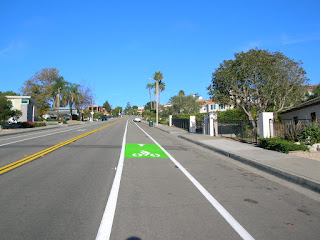On 6 December the LB Department of Public Works completed bike-lanes on Park Avenue, from Wendt Terrace to Alta Laguna Blvd. The project was completed on request from the school district to manage eBikes and bicycles near Thurston Intermediate School.
It is noteworthy of this project that
- the posted speed limits were not reduced
- on-street parking retained even where nobody parks
- the motorist lane width was greatly reduced
- Sharrows were considered inappropriate
- no traffic counts (measurements) were taken
These are photos taken from a cyclists perspective ascending Park Avenue from Wendt Terrace to Alta Laguna Blvd.
How could LB Public Works improve projects like this ?
- Reduce posted roadway speeds and differentials
- Employ traffic calming devices
- Prioritize roadway users to on-street parking
- Consult street users who actually ride bikes
- Take traffic counts: Peds, Bikes, Bus, Cars
- Consult cycling organizations: BikeLA, CABO
- Utilize Sharrows on descent, bike-lanes on ascent
-LS



























































